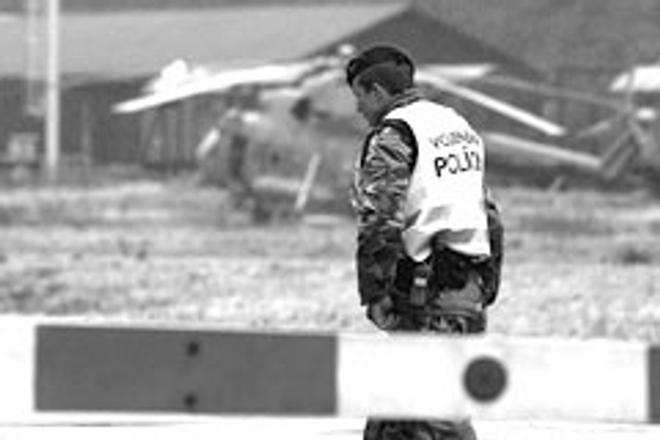THE INHABITANTS of the small town of Nováky, in western Slovakia, recently got an unwelcome reminder of the fear they experienced just over a year ago when a huge ammunition explosion at the local Military Maintenance Plant (Vojenský opravárenský podnik, or VOP) cost eight people their lives and caused considerable damage. The explosion took place on March 2, 2007. On the night of May 28 this year, army, police and fire-fighters were employed in a major operation to transport explosive material from Nováky to the Military Technological and Testing Institute in Záhorie, north of Bratislava, where it will be decommissioned.
Initially, officials claimed the operation was a military exercise. But on May 29, Defence Minister Jaroslav Baška and Interior Minister Robert Kaliňák confirmed that it was more than just a training operation.
“The reason for the transport was the fact that the material involved represented a potential future threat, and under certain circumstances could cause major damage,” Baška told journalists.
“This transport was the most important phase of the liquidation of the consequences of the tragic explosion,” Baška told reporters at a press conference.
After last year’s explosion, the VOP was not able to dispose of the material, according to Baška. “The Military Institute in Záhorie is the only place in Slovakia where we can safely decommission such pyrotechnic substance,” Baška told journalists.
The so-called pyrotechnic substance is used to ignite explosives. According to Baška, the material looks like sand, but the ministers did not specify the amount, detailed composition, or origin of the material transported. According to Baška, it had built up at the VOP on Nováky “from 2002 to 2005, accumulated by the irresponsible actions of employees at the plant.”
The convoy of vehicles transporting the material, which was accompanied by special police units and which, according to the Sme daily, was six kilometres long, aroused attention not just in Nováky, but was noticed by the national media. Sme showed video-recordings of the convoy on its website several hours before ministers Baška and Kaliňák spoke about it. According to Kaliňák, the vehicles transporting the explosives were constantly monitored by thermal cameras in order to detect any over-heating in engines or tyres which might have resulted in a fire. Kaliňák said that 135 soldiers, 55 military vehicles, 120 policemen, 42 police cars, 120 firemen and 37 fire trucks took part in the operation. He said it had been prepared for some time, and had been preceded by two practice runs.
Dušan Šimka, the mayor of the town of Nováky told The Slovak Spectator that he was given no information about the operation, and was thus unable to provide any consolation to concerned Nováky inhabitants who turned to him for help. He called several public authorities to find out more, but was told nothing. He also asked the police who were accompanying the convoy.
“I was unpleasantly surprised,” Šimka told The Slovak Spectator. He added that the convoy used a road just metres from houses where scared Nováky inhabitants live.
Ministers justified the secrecy surrounding the operation by citing the fear of a possible attack on the convoy. Defence Ministry spokesman Vladimír Gemela was asked by The Slovak Spectator whether the authorities planned to inform local bodies about similar operations which might take place in future. He declined to answer, saying only: “In compliance with the law, only authorised persons were informed in advance about the transport.”
According to Gemela, the transfer was a crucial phase in an approved security measure and was hence subject to the law on classified information. “According to this law, all persons authorised were informed about the transport,” Gemela repeated.
Both Baška and Kaliňák refused to comment on speculation that material was later taken by plane to Poland. A flight from the Kuchyňa military airbase which took off after the convoy arrived in Záhorie was not connected with the operation, Baška said.
The March 2007 explosion in Nováky in March 2007 killed eight people working at the site and caused widespread damage. The investigation into the tragedy is yet to be completed.


 A military policeman looks on in Nováky after the 2007 explosion there. (source: Sme - Ján Krošlák)
A military policeman looks on in Nováky after the 2007 explosion there. (source: Sme - Ján Krošlák)